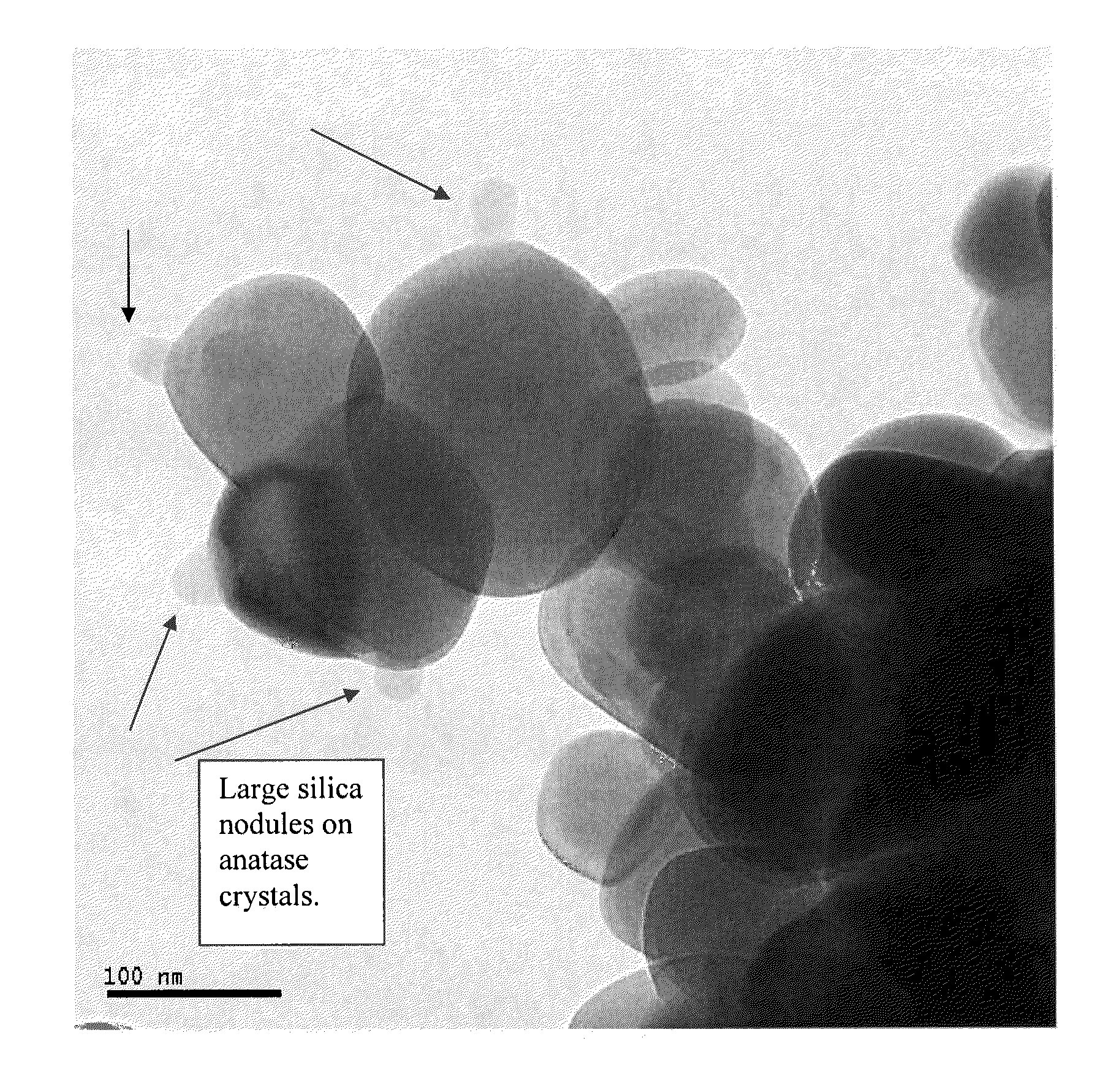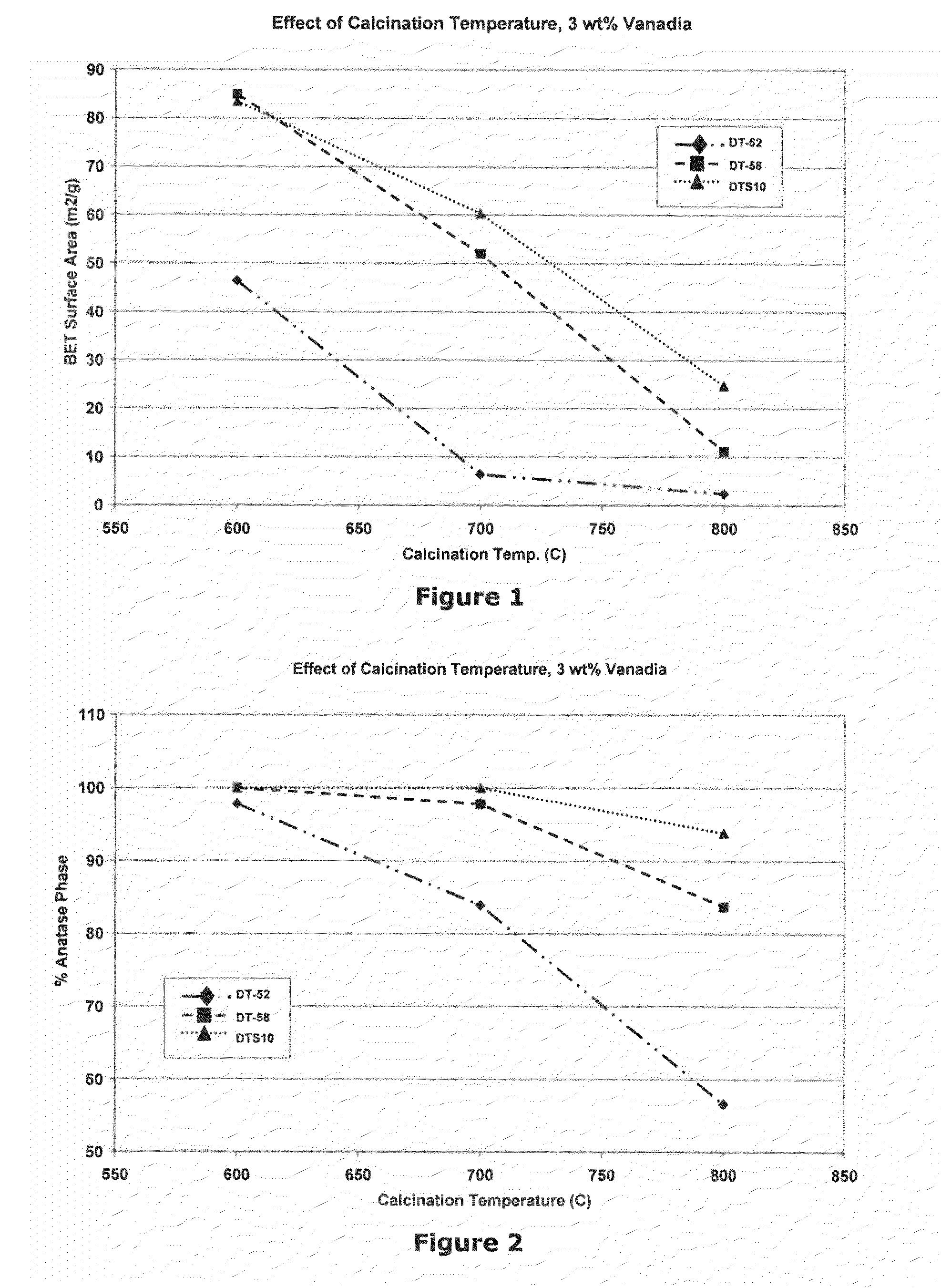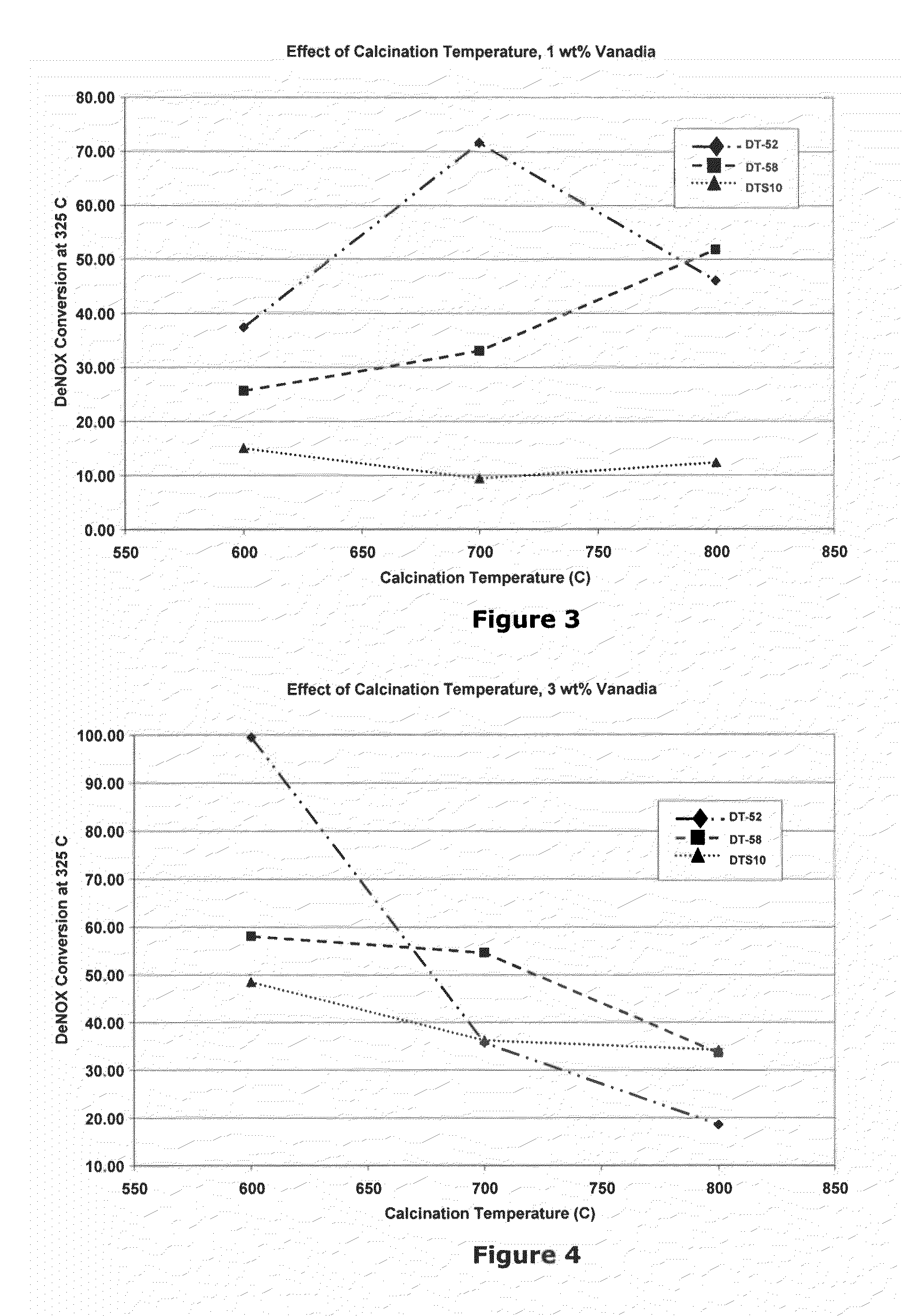Silica-stabilized ultrafine anatase titania, vanadia catalysts, and methods of production thereof
a technology of vanadia catalysts and anatase titania, which is applied in the direction of metal/metal-oxide/metal-hydroxide catalysts, machines/engines, etc., can solve the problems of high catalyst requirements, high gas space velocities, and low catalyst requirements, so as to prevent sintering (crystal growth), maintain the anatase phase, and equal or improve the catalytic activity
- Summary
- Abstract
- Description
- Claims
- Application Information
AI Technical Summary
Benefits of technology
Problems solved by technology
Method used
Image
Examples
examples
[0065]Titania Starting Material
[0066]In one embodiment of the present invention, a sulfated titania slurry (see Table 1) was used. Such a sulfated titania slurry can be obtained as an intermediate product in a production process for making titanium dioxide using the sulfuric acid process, for example as produced by the MIC production facility in Thann, France. Such a slurry comprises about 27% of a high surface area, hydrous anatase titania, TiO2. The TiO2 has primary crystallite particles having sizes of less than 5 nanometers, and corresponding N2 BET surface areas in excess of 250 m2 / g. The slurry has a viscosity of 0.5-3 poises, a density of 1275 kg / m3, and a low pH of around 1.5-2.0, which results from the fact that the slurry contains about 6.6 wt % SO3. However, the present invention is not restricted to use of this slurry. Any composition comprising hydrous anatase titania could be used herein. Indeed, it is not necessary to use a sulfated titania slurry as the starting mate...
examples 1-3
Benchmarking of Commercial Materials
[0077]In the following three examples, we sought to benchmark the performance of several commercial prior art materials that are used in SCR applications, DT-52™ (Example 1), DT-58™ (Example 2) and DT-S10™ (Example 3). Properties for these three materials are listed in Table 2. It can be seen that DT-52™ contains added tungsta (but not silica), DT-S10™ contains added silica (but not tungsta) and DT-58™ contains both added tungsta and silica.
[0078]
TABLE 2Target Properties of Commercial MaterialsMaterialPropertyUnitDT-52DT-58DT-S10WO3wt %10.09.00.0SiO2wt %0.010.010.0TiO2wt %Balance (90)Balance (81)Balance (90)Surface Aream2 / g90110110Crystal PhaseAnataseAnataseAnatase
[0079]For each of Examples 1-3, the base materials were used as received, and vanadia was loaded onto them in the following way. A solution of monoethanolamine (MEA) in deionized water was prepared that was 0.4 M (24.4 g / L MEA). To this solution was added 10.9 g / L V2O5, (0.06 M). In orde...
examples 4-5
[0086]The following examples reveal the performance of two additional commercial prior art materials (MIC DT-60™ and Tayca Corporation ITAC 115GS™) in relation to DT-58™. Samples of these materials were analyzed for composition using x-ray fluorescence analysis, with results shown in Table 4.
[0087]
TABLE 4Compositions of MaterialsOxide, wt %DT58MIC DT60TaycaTiO280.58484.2WO39.15.35.2SiO29.810.310.2SiO30.40.20.2
[0088]The results show that the DT-60™ and Tayca™ samples contain nominally about 10 wt % SiO2 and about 5 wt % WO3. All three types of materials were loaded with 0.9 wt % V2O5 using deposition from MEA solution as in Examples 1-3. The products were then aged at 800° C. for 6 hrs in air in a static muffle furnace, and the products were analyzed using the N2 BET method. For the DeNOx activity, (micro-reactor), a 0.1 g sample of each vanadia-loaded catalyst sample was pelletized and meshed to −20 / +40 mesh, and was loaded into a reactor to determine the conversion of NO in the pre...
PUM
| Property | Measurement | Unit |
|---|---|---|
| thicknesses | aaaaa | aaaaa |
| temperatures | aaaaa | aaaaa |
| surface area | aaaaa | aaaaa |
Abstract
Description
Claims
Application Information
 Login to View More
Login to View More - R&D
- Intellectual Property
- Life Sciences
- Materials
- Tech Scout
- Unparalleled Data Quality
- Higher Quality Content
- 60% Fewer Hallucinations
Browse by: Latest US Patents, China's latest patents, Technical Efficacy Thesaurus, Application Domain, Technology Topic, Popular Technical Reports.
© 2025 PatSnap. All rights reserved.Legal|Privacy policy|Modern Slavery Act Transparency Statement|Sitemap|About US| Contact US: help@patsnap.com



